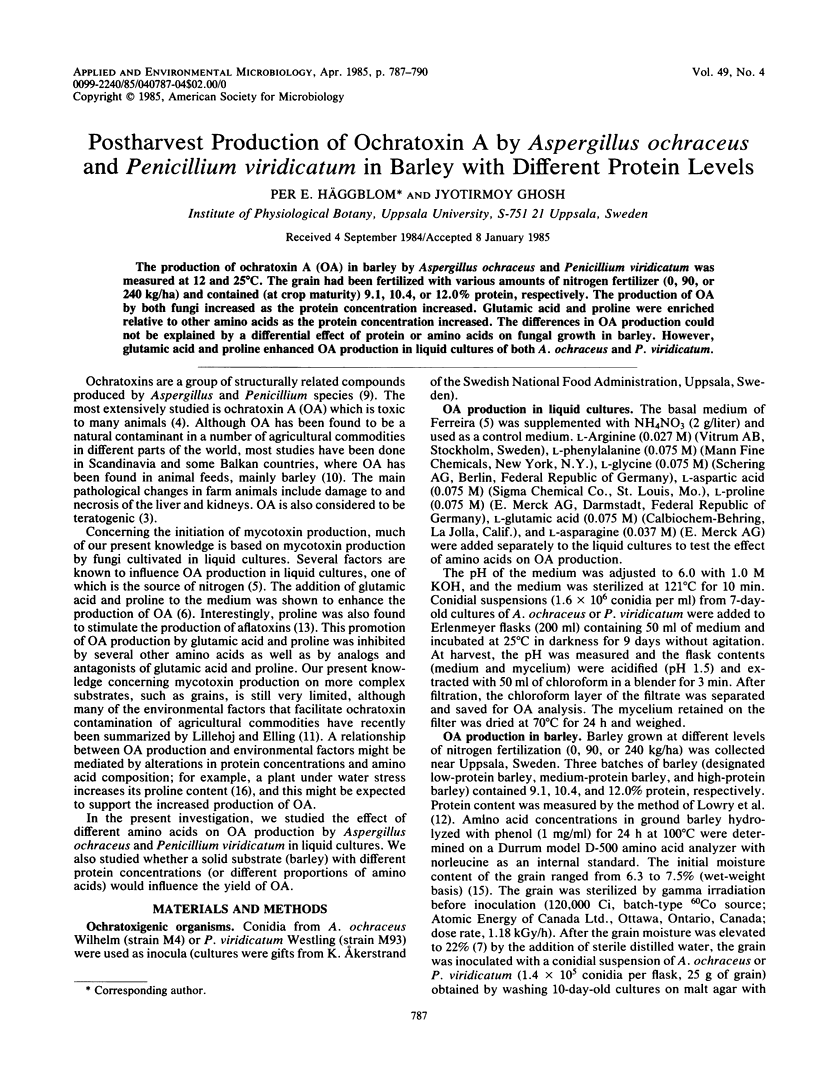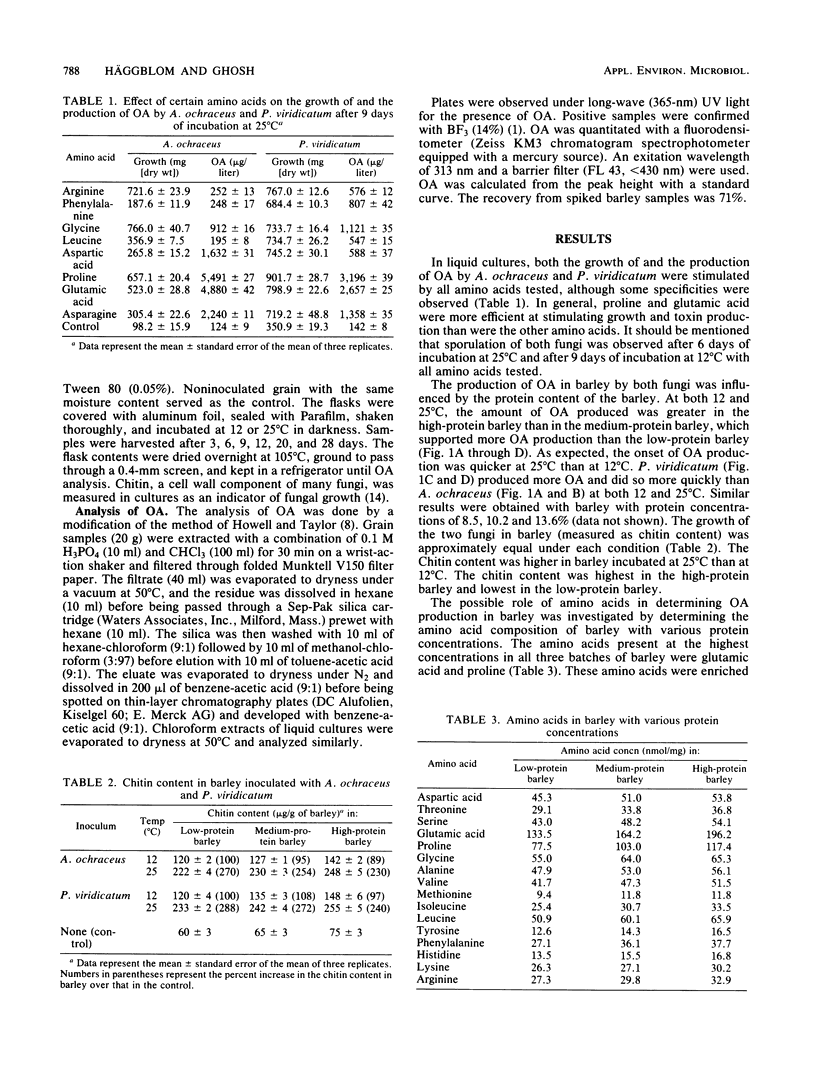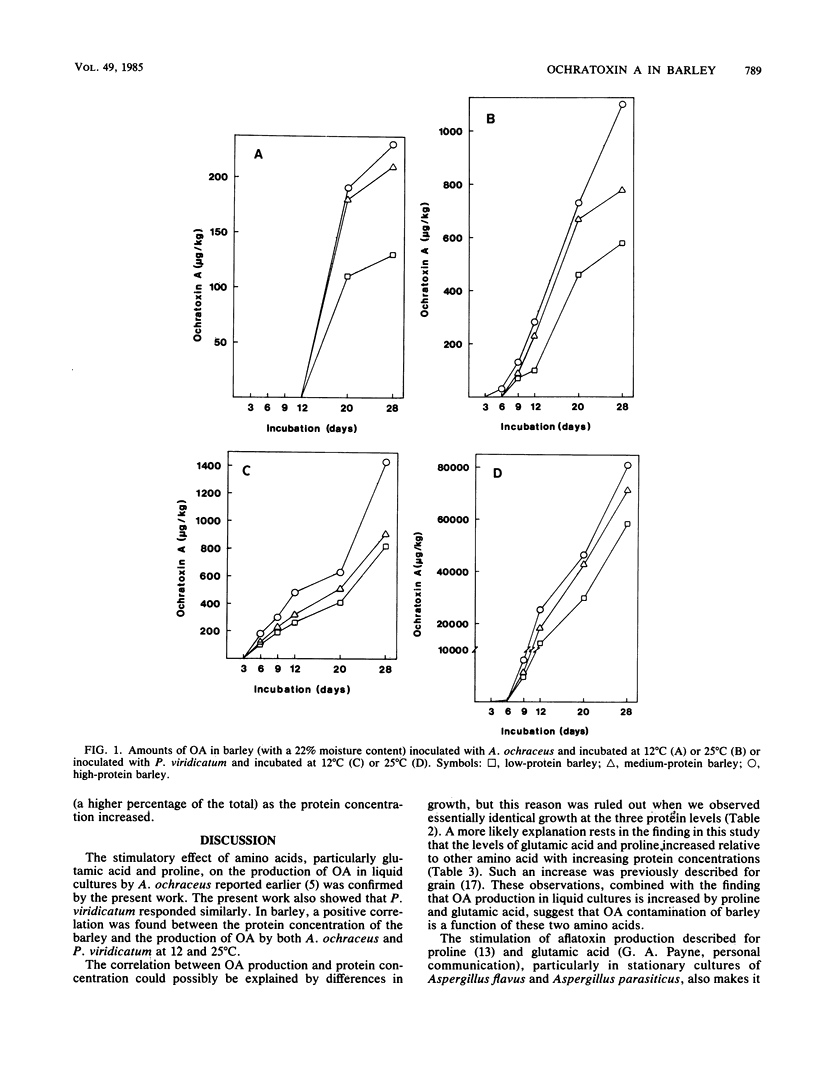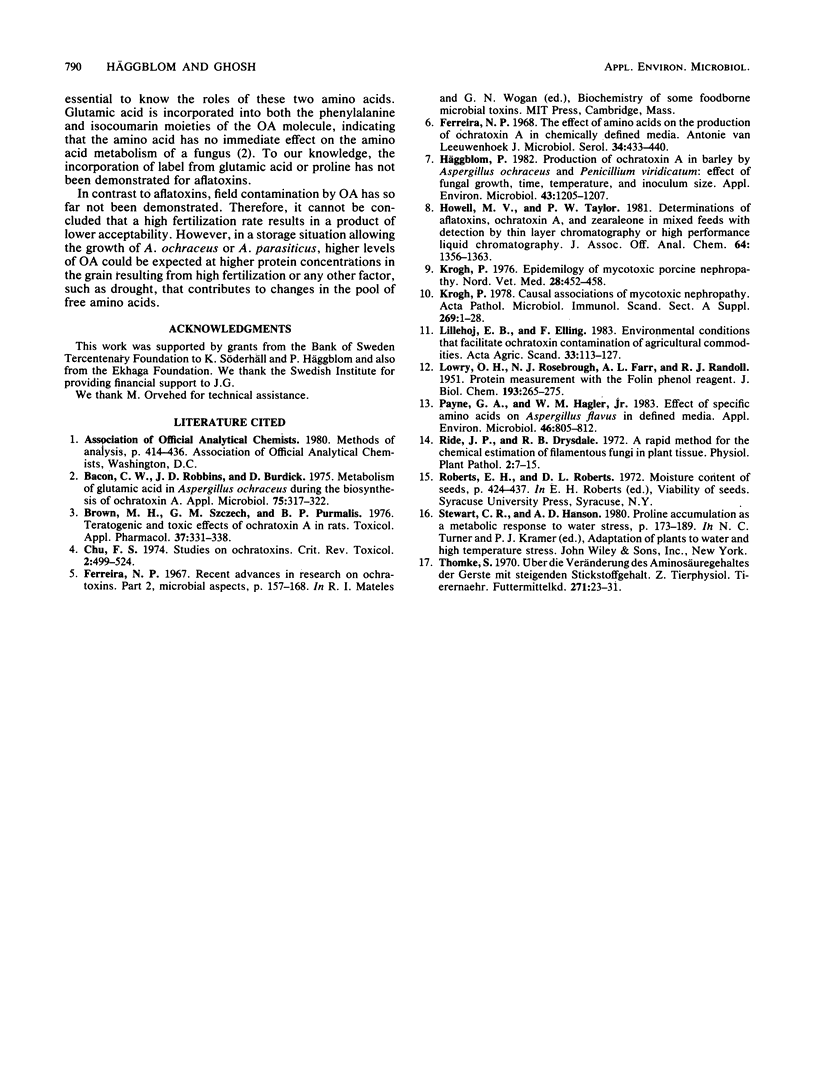Abstract
The production of ochratoxin A (OA) in barley by Aspergillus ochraceus and Penicillium viridicatum was measured at 12 and 25 degrees C. The grain had been fertilized with various amounts of nitrogen fertilizer (0, 90, or 240 kg/ha) and contained (at crop maturity) 9.1, 10.4, or 12.0% protein, respectively. The production of OA by both fungi increased as the protein concentration increased. Glutamic acid and proline were enriched relative to other amino acids as the protein concentration increased. The differences in OA production could not be explained by a differential effect of protein or amino acids on fungal growth in barley. However, glutamic acid and proline enhanced OA production in liquid cultures of both A. ochraceus and P. viridicatum.
Full text
PDF



Selected References
These references are in PubMed. This may not be the complete list of references from this article.
- Bacon C. W., Robbins J. D., Burdick D. Metabolism of glutamic acid in Aspergillus ochraceus during the biosynthesis of ochratoxin A. Appl Microbiol. 1975 Mar;29(3):317–322. doi: 10.1128/am.29.3.317-322.1975. [DOI] [PMC free article] [PubMed] [Google Scholar]
- Brown M. H., Szczech G. M., Purmalis B. P. Teratogenic and toxic effects of ochratoxin A in rats. Toxicol Appl Pharmacol. 1976 Aug;37(2):331–338. doi: 10.1016/0041-008x(76)90096-x. [DOI] [PubMed] [Google Scholar]
- Chu F. S. Studies on ochratoxins. CRC Crit Rev Toxicol. 1974 Jan;2(4):499–524. doi: 10.3109/10408447309025706. [DOI] [PubMed] [Google Scholar]
- Ferreira N. P. The effect of amino acids on the production of ochratoxin A in chemically defined media. Antonie Van Leeuwenhoek. 1968;34(4):433–440. doi: 10.1007/BF02046465. [DOI] [PubMed] [Google Scholar]
- Howell M. V., Taylor P. W. Determination of aflatoxins, ochratoxin a, and zearalenone in mixed feeds, with detection by thin layer chromatography or high performance liquid chromatography. J Assoc Off Anal Chem. 1981 Nov;64(6):1356–1363. [PubMed] [Google Scholar]
- Häggblom P. Production of ochratoxin A in barley by Aspergillus ochraceus and Penicillium viridicatum: effect of fungal growth, time, temperature, and inoculum size. Appl Environ Microbiol. 1982 May;43(5):1205–1207. doi: 10.1128/aem.43.5.1205-1207.1982. [DOI] [PMC free article] [PubMed] [Google Scholar]
- Krogh P. Casual associations of mycotoxic nephropathy. Acta Pathol Microbiol Scand Suppl. 1978;(269):1–28. [PubMed] [Google Scholar]
- Krogh P. Epidemiology of mycotoxic porcine nephropathy. Nord Vet Med. 1976 Sep;28(9):452–458. [PubMed] [Google Scholar]
- LOWRY O. H., ROSEBROUGH N. J., FARR A. L., RANDALL R. J. Protein measurement with the Folin phenol reagent. J Biol Chem. 1951 Nov;193(1):265–275. [PubMed] [Google Scholar]
- Payne G. A., Hagler W. M., Jr Effect of specific amino acids on growth and aflatoxin production by Aspergillus parasiticus and Aspergillus flavus in defined media. Appl Environ Microbiol. 1983 Oct;46(4):805–812. doi: 10.1128/aem.46.4.805-812.1983. [DOI] [PMC free article] [PubMed] [Google Scholar]


